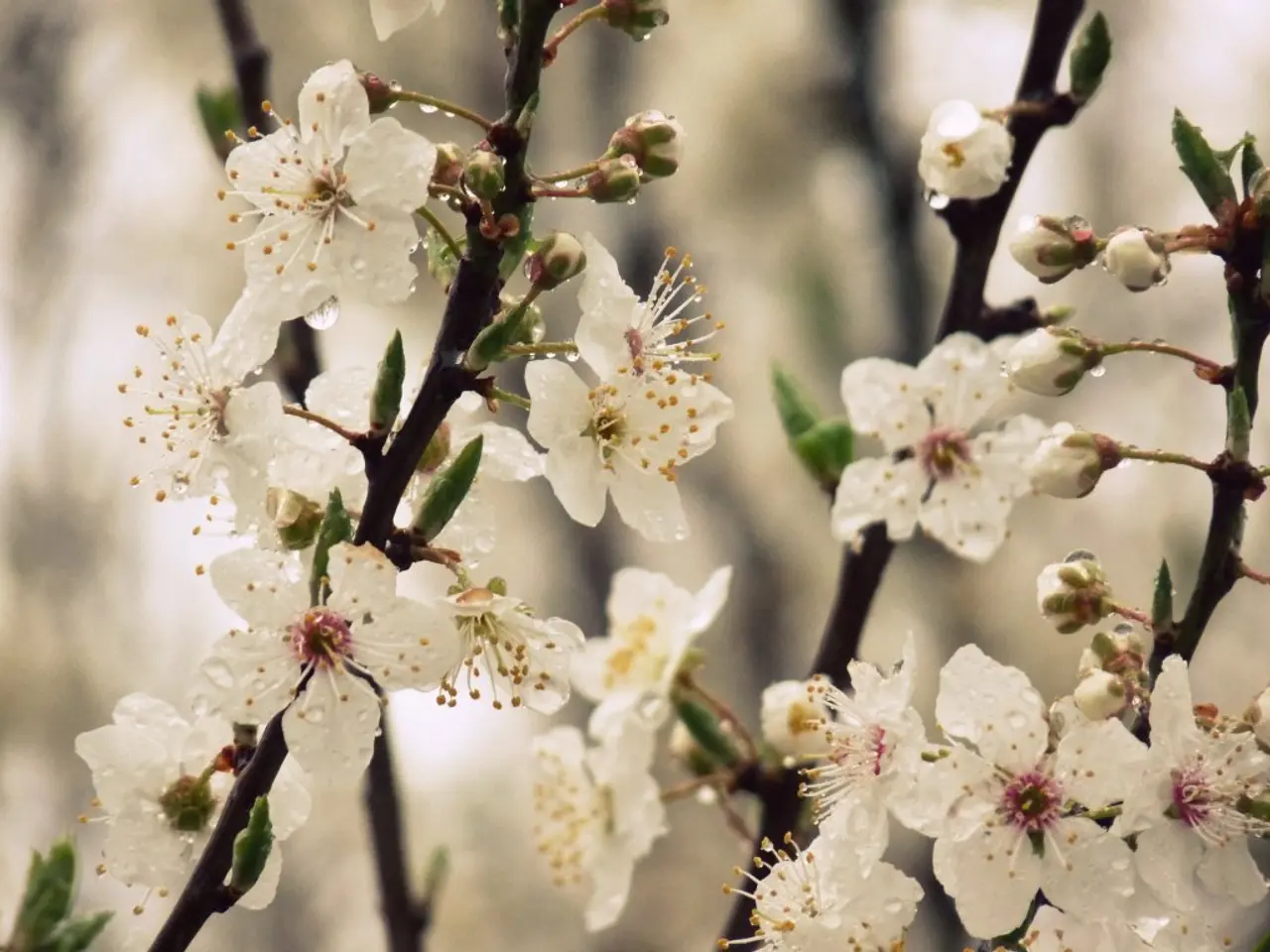Herbal Extraction of Echinacea
Making Your Own Echinacea Tincture: A Guide
Echinacea tincture, a popular herbal remedy, can be easily made at home with a few basic ingredients and some patience. Here's a step-by-step guide on how to prepare this immune-boosting tincture.
Ingredients - Echinacea (fresh or dried roots, leaves, and flowers) - Vodka (at least 80 proof/40%, but ideally around 50% or 100 proof) - Pint Mason Jar - Fine Mesh Strainer - Amber Glass Tincture Bottles with droppers
Preparation
Begin by gathering your echinacea and placing it in the Mason jar. Fill the jar almost to the top, ensuring there is enough space for the alcohol. Next, pour the vodka over the echinacea, covering it completely. Seal the jar tightly and store it in a cool, dark place for 4 to 6 weeks, shaking it daily. After the required time has passed, strain the tincture into amber glass bottles.
Additional Blends
For added benefits, you can blend echinacea with other herbs such as goldenseal, yarrow, linden, chamomile, elderflower, elderberry, rose hips, Oregon grape, ginger, cayenne, marshmallow, and usnea. These blends can help soothe sore throats, fight infections, and provide extra immune support.
Dosage
For general use, herbalists recommend taking 1 to 2 droppers or 1 to 4 ml of echinacea tincture three times per day at the onset of an illness or when you may need extra immune support. However, for a more specific dosage based on weight, herbalist Susan Weed prescribes 1 drop for every 2 pounds of body weight.
When sick or experiencing acute symptoms, the full dosage can be administered every 1 to 2 hours. If you catch it before you're really sick, every 3 to 4 hours should be sufficient. For most children, that amounts to no more than a dropper full, and she often rounds to a full dropper full for children 25 to 50 pounds.
Growing Your Own Echinacea
If you'd like to grow your own echinacea, the most common species to grow and use in herbal preparations is the Eastern Purple Coneflower (Echinacea purpurea). Other species such as Pale Purple Coneflower (Echinacea pallida), Narrow-leaved Coneflower (Echinacea augustifolia), and Yellow Coneflower (Echinacea paradoxa) can also be grown. Starting from seed can be a bit more difficult, with germination rates for echinacea seed only around 50%. All echinacea species except Echinacea purpurea need a period of cold stratification to break dormancy.
Safety and Storage
WebMD rates echinacea as "likely safe" for most applications. However, persons with autoimmune issues should exercise caution as echinacea interacts with the immune system and can stimulate a response, which could cause issues if you already have an abnormally functioning immune system. It is recommended to store the tincture out of direct sunlight, preferably in amber-colored glass bottles, and to label it with the date and suggested dosages.
Cost-Effectiveness
A dozen 2-ounce amber bottles can be bought for less than the cost of a single 1 ounce prepared echinacea tincture. With this in mind, making your own tincture can be a cost-effective option.
Sustainability
It's important to note that echinacea is a beautiful wildflower native to North America, but wild echinacea populations are declining due to habitat destruction and intensive overharvesting. It's best to buy echinacea from suppliers who source their echinacea from organic farms rather than wild populations.
Conclusion
Echinacea tincture is a versatile and effective remedy for immune support and fighting off infections. By following this guide, you can easily make your own tincture at home, and even grow your own echinacea for a sustainable and cost-effective solution. As always, it's recommended to consult with a clinical herbalist to get a specific dosage for your body and needs.




